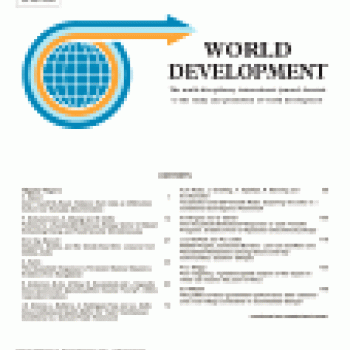Publication Information

Rozana Himaz's paper draws on Young Lives evidence from India and has been published in World Development: https://www.sciencedirect.com/science/article/pii/S0305750X17304126.
The paper looks at patterns of growth faltering and catch up of around 1000 children as they moved from 8 to 19 years of age, from middle childhood through adolescence to young adulthood, using Height for Age Differnetce (HAD) and Height for age z-scores (HAZ). It also looks at what individual and household characteristics may have moved these children into or out of situations of nutritional deprivation and how their stunting profile in later childhood correlates with psychosocial outcomes at age 19 and how it may have intergenerational consequences.
Himaz finds that there are signficant gender based biases in growth galtering later in childhoood disfavouring girls and that becoming newly stunted as an adolescent is strongly correlated with a child reporting to have poorer relationships with peers compared to the group that were never stunted. We also find that a girl experiencing stunting in middle childhood or adolescence (even if the were not stunted at age 8 or eventually moved out of being stunted by age 19) correlates significantly with offspring being shorter and thinner thatn the offspring of girls never stunted. This [Young Lives] is one of few, if any, studies that look at growth patterns in middle childhood and adolescence and outcomes as a young adult and the results are important for their implications for further research and policy.

Rozana Himaz's paper draws on Young Lives evidence from India and has been published in World Development: https://www.sciencedirect.com/science/article/pii/S0305750X17304126.
The paper looks at patterns of growth faltering and catch up of around 1000 children as they moved from 8 to 19 years of age, from middle childhood through adolescence to young adulthood, using Height for Age Differnetce (HAD) and Height for age z-scores (HAZ). It also looks at what individual and household characteristics may have moved these children into or out of situations of nutritional deprivation and how their stunting profile in later childhood correlates with psychosocial outcomes at age 19 and how it may have intergenerational consequences.
Himaz finds that there are signficant gender based biases in growth galtering later in childhoood disfavouring girls and that becoming newly stunted as an adolescent is strongly correlated with a child reporting to have poorer relationships with peers compared to the group that were never stunted. We also find that a girl experiencing stunting in middle childhood or adolescence (even if the were not stunted at age 8 or eventually moved out of being stunted by age 19) correlates significantly with offspring being shorter and thinner thatn the offspring of girls never stunted. This [Young Lives] is one of few, if any, studies that look at growth patterns in middle childhood and adolescence and outcomes as a young adult and the results are important for their implications for further research and policy.

